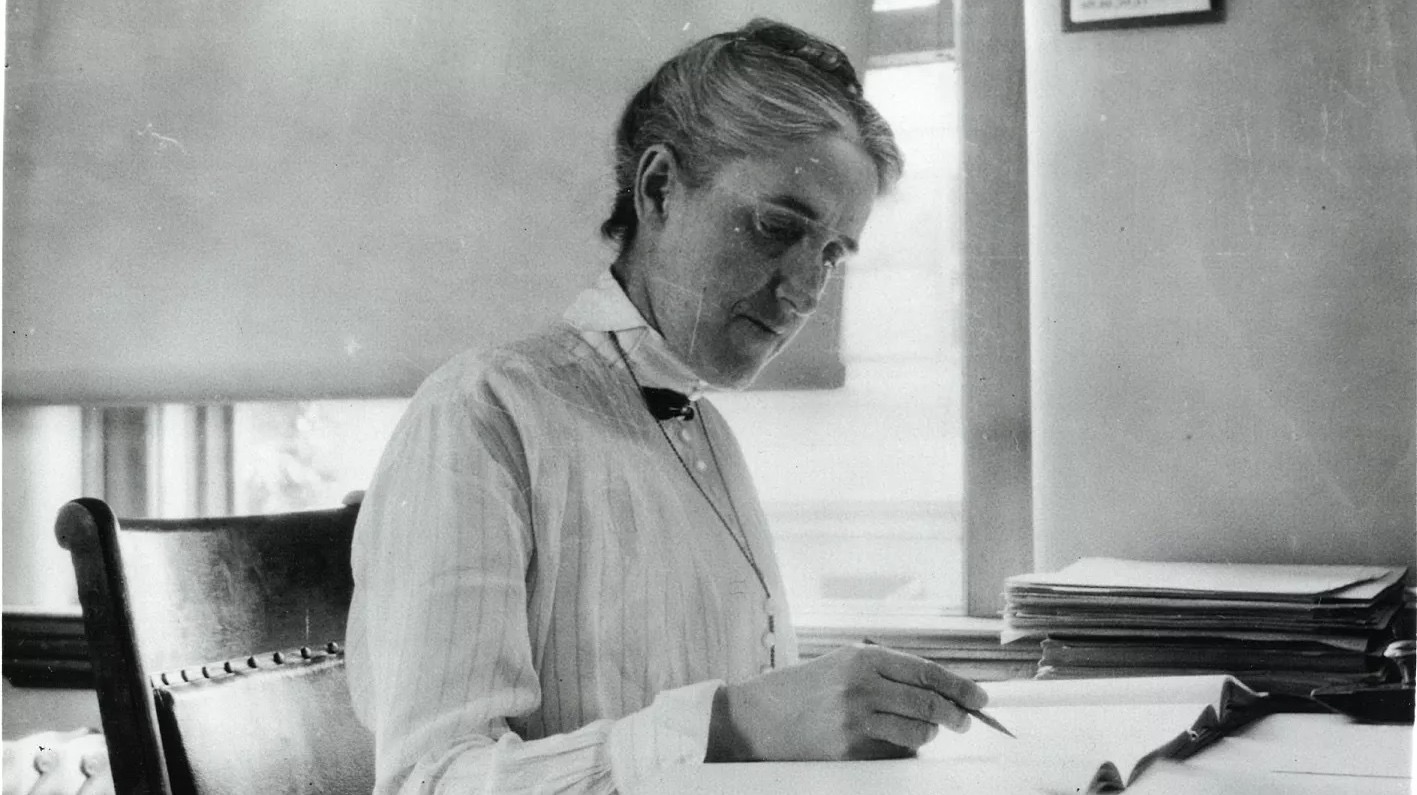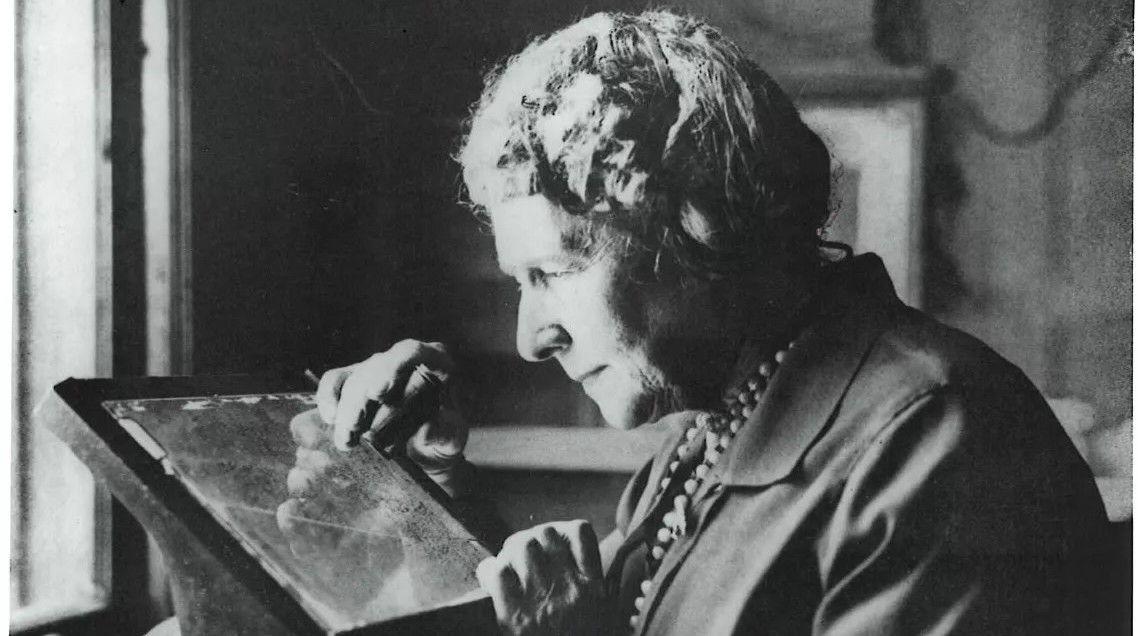How human 'computers' Annie Jump Cannon and Henrietta Swan Leavitt revolutionized astronomy
Both women stand out as geniuses worthy of a Nobel prize, but neither got one.

In the early 20th century, a team of "human computers" — women tasked with the grueling labor of manual astronomical data processing — went far beyond their job descriptions, not to mention the societal norms of the time, to revolutionize astronomy.
The technological developments of the late 1800s were a blessing and a curse for astronomy. The invention of the photograph created an entirely new way to perform astronomical imaging. No longer were astronomers tied to the eyepieces of their telescopes, forced to make sketches and diagrams of what they saw. Now a small team of astronomers could spend night after night simply collecting as many images as they possibly could, and save all the cataloging and studying for later. Plus, photography allowed telescopes to capture much fainter stars, far beyond what the human eye could perceive, allowing astronomers to pull in unprecedented numbers of stars.
But this was before the modern era of digital processing, which meant that churning through all those photographic plates to create sensible summaries of the data was a nightmare. To help make sense of this overwhelming amount of data, observatories around the world began employing computers. But these were not the modern technological machines we know today. Back then, "computer" was a job description — a person who could perform all of the routine data processing tasks, like examining stellar spectra, performing calculations and assigning categories to various objects.
Related: 'The Glass Universe': How women 'computers' measured the stars
Astronomer Edward Pickering, then director of the Harvard Observatory, wanted to build the world's largest catalog of stars. To do this, he employed a large team of human computers. Their job was highly specialized; these individuals needed a high level of education, but this kind of grunt work was beneath the dignity of the male-dominated field of astronomy. So Pickering turned to women who were educated at the (still controversial) schools for higher learning dedicated to them at the time.
While the "Harvard Computers," as the team came to be known, went on to achieve many successes, two women in particular stand out as geniuses worthy of Nobel prizes (although neither was awarded one).

Annie Jump Cannon
The first was Annie Jump Cannon. Born in Delaware in 1863, she was encouraged to work in astronomy by her mother, who enjoyed showing her the constellations at night. After Cannon joined the Harvard Computers, she immersed herself in the work of classifying stars — a task she relished. Each classification had to be done by hand by carefully examining the spectra taken of each individual star, sometimes with the aid of a magnifying glass to study the faintest details. Over the course of her impressive career, she managed to manually classify over 350,000 stars.
Get the Space.com Newsletter
Breaking space news, the latest updates on rocket launches, skywatching events and more!
Given Cannon's intimate access to the data, she began developing intuition about stellar classification that no one else could match. At the time, astronomers had no idea why different stars appeared to have different colors and different spectra, nor did they understand how stars were born, what powered them or how they evolved. But they did have a hunch that if they could properly classify the stars, they could gain a clue as to how it all worked.
Cannon took an existing system, which labeled stars from A to O based on the appearance of various spectral features, and rearranged it. She realized that some categories were unnecessary, others overlapped and others needed to be switched around. By studying hundreds of thousands of stars, she brought order to the chaos.
Cannon proposed a new system of stellar classification that remains the bedrock of the modern system today. With her new system, later astronomers were able to make sense of stellar evolution and eventually unlock the mysteries of nuclear fusion.
Henrietta Swan Leavitt
Born in 1868 in Massachusetts, Henrietta Swan Leavitt began volunteering as a Harvard Computer; because jobs for women in astronomy were so few and far between at that time, many were willing to work unpaid. In 1902, she transitioned to a paid position in the group, and Pickering tasked her with cataloging variable stars in the Magellanic Clouds.
Leavitt made a discovery that would eventually revolutionize our view of the cosmos. In 1912, she found that a particular kind of variable star, known as a Cepheid variable (because the first of its kind was found in the constellation Cepheus), exhibited a strange relationship. At the time, nobody knew exactly how far away the Magellanic Clouds were from our solar system. But in guessing that all of the Cepheid variables in the Large Magellanic Cloud were roughly the same distance from us, she discovered that the brighter a Cepheid variable was overall, the longer it took to vary from dim to bright and back again.
Eventually, other astronomers found another Cepheid variable close enough to us to get a parallax distance measure to it, and with that, Leavitt's result unlocked the universe. Any time an astronomer found a Cepheid variable, they could measure its pulsation rate, which is a relatively straightforward measurement. From there, they could calculate the true brightness of the star based on Leavitt's relationship and then compare the true brightness to the perceived brightness and calculate a distance.
A decade later, Edwin Hubble would apply Leavitt's relationship to Cepheid variables found in the Andromeda "nebula" — and discover that it was instead a galaxy 2.5 million light-years from us.
Join our Space Forums to keep talking space on the latest missions, night sky and more! And if you have a news tip, correction or comment, let us know at: community@space.com.

Paul M. Sutter is an astrophysicist at SUNY Stony Brook and the Flatiron Institute in New York City. Paul received his PhD in Physics from the University of Illinois at Urbana-Champaign in 2011, and spent three years at the Paris Institute of Astrophysics, followed by a research fellowship in Trieste, Italy, His research focuses on many diverse topics, from the emptiest regions of the universe to the earliest moments of the Big Bang to the hunt for the first stars. As an "Agent to the Stars," Paul has passionately engaged the public in science outreach for several years. He is the host of the popular "Ask a Spaceman!" podcast, author of "Your Place in the Universe" and "How to Die in Space" and he frequently appears on TV — including on The Weather Channel, for which he serves as Official Space Specialist.









